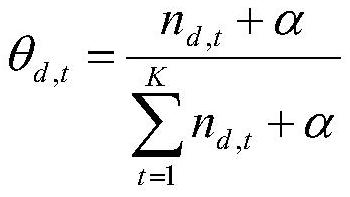Topic modeling method based on word co-occurrence network
A topic modeling and topic technology, applied in the fields of instruments, electrical digital data processing, computing, etc., can solve the problems of strong assumptions, high probability, limited ability of short text sparsity, etc., to avoid energy and enhance co-occurrence information. Effect
- Summary
- Abstract
- Description
- Claims
- Application Information
AI Technical Summary
Problems solved by technology
Method used
Image
Examples
Embodiment
[0015] Such as figure 1 Shown is a flow chart of a topic modeling method based on a word co-occurrence network, said method comprising steps:
[0016] (1) Construct a word co-occurrence network according to a given corpus or text collection, including steps:
[0017] Let the collection of documents be D={d 1 , d 2 ,...,d n}, each document consists of multiple words
[0018] (1-1) Perform preprocessing operations on the text collection D, including: converting all words to lowercase, removing stop words and punctuation marks, removing words with less than 3 characters and documents with less than 3 words. The document collection obtained after preprocessing is still recorded as D;
[0019] (1-2) Deduplicate all the words that have appeared in the text set D, and form a set V, which is called a vocabulary. Each word in V corresponds to a node in the word co-occurrence network. If two words in the vocabulary co-occur in a document, an undirected edge is connected between ...
PUM
 Login to View More
Login to View More Abstract
Description
Claims
Application Information
 Login to View More
Login to View More - R&D
- Intellectual Property
- Life Sciences
- Materials
- Tech Scout
- Unparalleled Data Quality
- Higher Quality Content
- 60% Fewer Hallucinations
Browse by: Latest US Patents, China's latest patents, Technical Efficacy Thesaurus, Application Domain, Technology Topic, Popular Technical Reports.
© 2025 PatSnap. All rights reserved.Legal|Privacy policy|Modern Slavery Act Transparency Statement|Sitemap|About US| Contact US: help@patsnap.com



